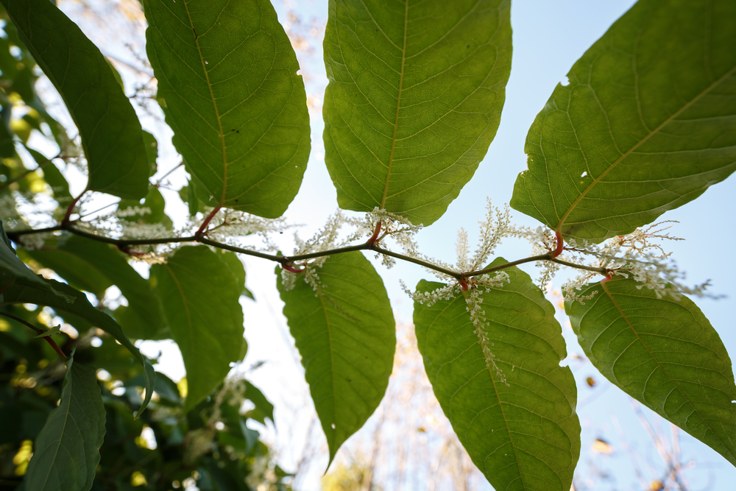For the vast majority of people in the UK, their property is their largest asset. But, unfortunately, Japanese knotweed can have a serious impact on a property’s value and can deter potential buyers from purchasing a home. This is still the case even if the knotweed has been successfully treated, making homes particularly difficult to sell. But how can you identify Japanese knotweed – and get rid of it?
Table of contents:
1. What is Japanese knotweed? 2. How to identify Japanese knotweed? 3. Can I sell my house with Japanese knotweed? 4. What to do if a neighbour has Japanese knotweed? 5. Where is Japanese knotweed found in the UK? 6. How to remove Japanese knotweed from your property? 7. How much does it cost to remove Japanese knotweed?What is Japanese knotweed?
Japanese knotweed, also known as ‘Fallopia Japonica‘, is the most common form of knotweed found in the UK. It is highly invasive and grows vigorously from year-to-year, producing stems up to 3m tall (10ft) during summer months.
But it is the roots that cause the biggest problem, as the plant develops an extensive network of underground stems known as ‘rhizomes’, which can grow through hard surfaces such as concrete and tarmac. Worryingly, knotweed trials have shown that rhizomes as little as 0.7g (around 10mm or the length of your fingernail) can produce a whole new plant within 10 days. This can cause serious damage to the foundations – making selling highly challenging.
How to identify Japanese knotweed?
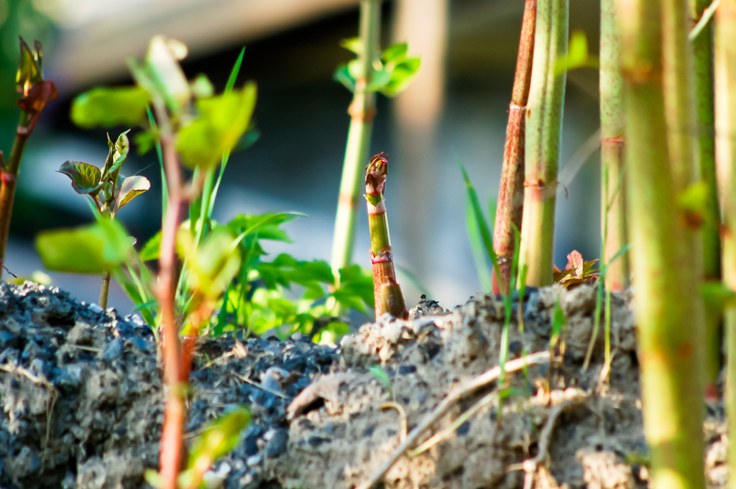
Photo credit: Erika J Mitchell / Shutterstock
What should you look out for?
When it comes to identifying Japanese knotweed, it is easy to misdiagnose as some plants have very similar characteristics. If you are suspicious of a plant, keep your eye out for some of the key features of Japanese knotweed:
- Red-tinged shoots (when it first breaks through the ground)
- A hollow stem (like bamboo)
- One stem per node
- Zig-zag stem growth
- Shield/shovel/heart shaped leaves with a flat base
- Mid-green coloured leaves
- Clusters of cream flowers (common towards the end of July)
- Normally dies back between September and November, resulting in brown stems
Interestingly, back in 1847, the invasive plant won a gold medal for the “best ornamental plant” in Utrecht, but little did they know how harmful it can be…
— Quite Interesting (@qikipedia) 15 February 2019
Despite these characteristics, Japanese knotweed can sometimes be confused with other common plants found in back gardens and in the wild.
This video shows you exactly how to visually check the plant thoroughly:
Can I sell my house with Japanese knotweed?
Before you begin selling a house with Japanese knotweed, you should take into account the problems that you may face. If your property, or a neighbouring area, has a confirmed sighting of Japanese Knotweed, then your options for sale will depend on its severity and how far away it is from your home.
Unfortunately, mortgage lenders are often very reluctant to lend on properties where knotweed is present, as the plant’s roots can affect the structural foundations of the property. This is a major problem when getting building insurance or a mortgage, as if anything happens to the property, companies are unwilling to pay out as it can be very expensive for them. This means it is incredibly difficult to sell a property where knotweed has been present or in the immediate surrounding area.
If a mortgage lender does accept, at the very least, they will need to see evidence of a treatment plan in place. But, bear in mind, that some will not lend unless the weed is completely rid from your property. To heighten the chance of your property selling, it is worth getting in touch with a Japanese knotweed removal company and begin treatment as soon as possible. However, it is important to know that Japanese knotweed removal is not a quick job. All-in-all, the process usually takes around three years to completely rid your property of Japanese knotweed, until the underground rhizomes become dormant.
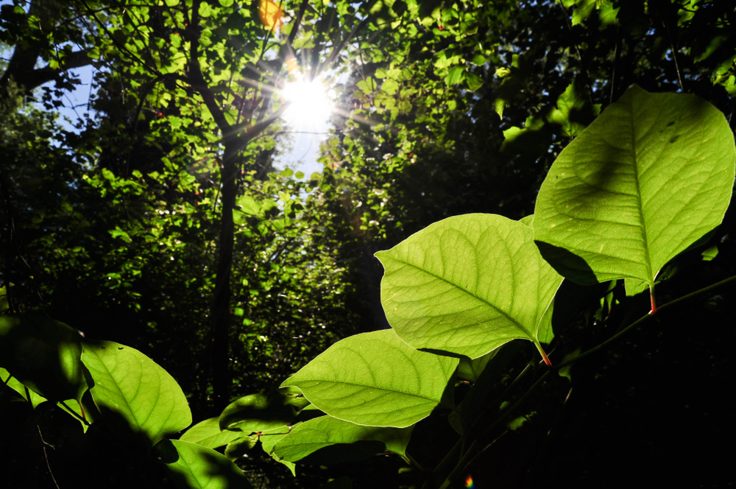
Photo credit: praiadotofo8400 / Shutterstock
If you are in a rush to move out and don’t have time to treat the property, your options at this stage are fairly slim. Consider selling your home to a cash buyer who can deal with the problem themselves, but keep in mind that this often results in selling your property for much less than the asking price – sometimes as much as 20% below market value. Alternatively, you could consult a cash buyer company who will buy all different kind of properties, no matter their condition, such as Sellhousefast.uk.
What to do if a neighbour has Japanese knotweed? Am I liable?
The short answer is no. According to a recent Court of Appeal ruling, landowners are now able to claim damages if the identified Japanese knotweed plant has invaded their property from elsewhere, which won’t leave you out of pocket. In short, if it can be proved that the knotweed growing stemmed from an adjoining property, that homeowner could be held liable for the cost of its removal and any loss of value.
Where is Japanese knotweed found in the UK?
If you are looking to move area, you may want to find out whether they have any cases of Japanese knotweed within a 5-mile radius. If there is, it is advisable to avoid with a bargepole, to ensure your new home will not be affected.
Environet have a great tool to see where confirmed cases of Japanese knotweed have been identified in the UK. Click the map below to take a look:
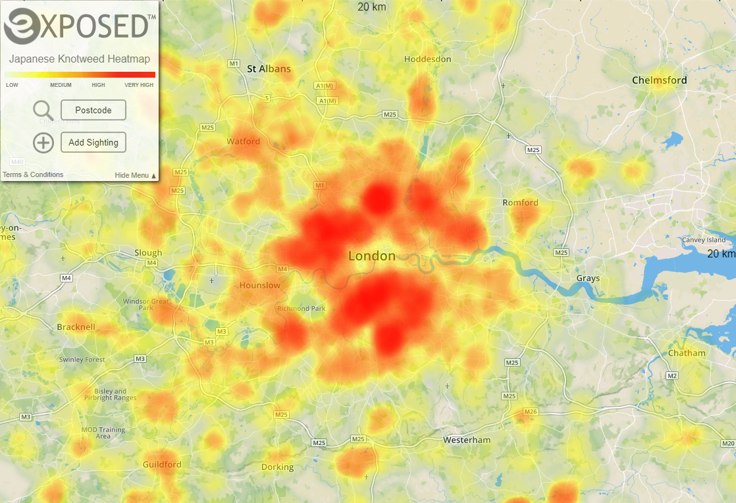
How to remove Japanese knotweed from your property?
Anyone with a Japanese knotweed plant on their property will be wondering how to kill Japanese knotweed. Unfortunately, according to Swansea University – who conducted the world’s largest field trial on the control of Japanese knotweed – eradication of the plant is not possible in the short term.
One of the researchers from the university, Dr Dan Jones said:
“Off the back of the first three years of data we’ve found that eradication is not possible. Hopefully over the longer term we may move towards that by using new chemicals we’re looking at. But [right now] it’s not a question of eradication, it’s a question of sustained control and management.”
However, this doesn’t mean the plant isn’t treatable. There are two common ways of removing Japanese knotweed from your property:
1. Herbicide treatment
This kind of treatment is ideal for:
- Homeowners
- Buyers
- Sellers
2. Excavation
This is recommended where long-term herbicide treatment is not desirable, or the area that is affected is to be disturbed frequently, such as:
- Turfing
- Paving
- Driveway
- House Extension
- Outbuilding (garden shed, garage, greenhouse)
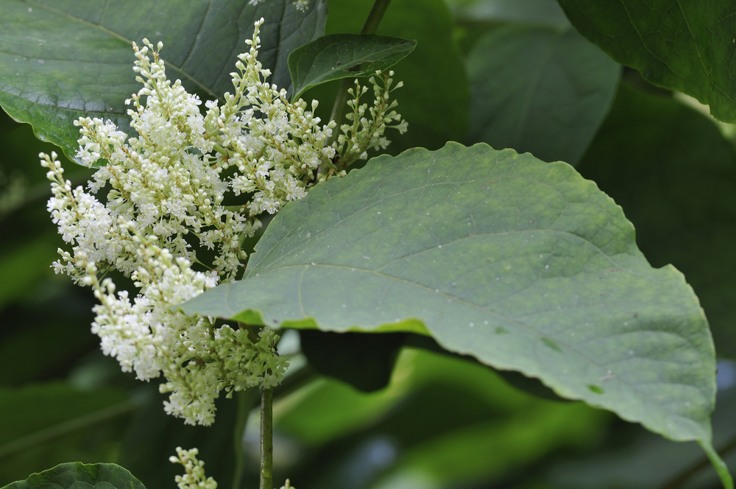
Photo credit: Martin Fowler / Shutterstock
As quick fix, you may be looking at how to get rid of Japanese knotweed yourself, without the use of specialists. Before doing this, beware that it may be more detrimental than helpful. The use of simple garden trimmers can be particularly problematic, as freshly-cut stems are able to grow more knotweed shoots, especially when buried in soil or immersed in water.
Therefore, it is advisable to consult a trusted Japanese knotweed removal company to do the hard work for you, to prevent spreading. Japanese knotweed experts will be able to discuss your options and may want to come and view the plant, to help figure out the best plan of action.
Some professional removal experts and national bodies include:
- Environet UK
- Japanese Knotweed Solutions
- Invasive Non-Native Specialists Association
- Property Care Association
How much does it cost to remove Japanese knotweed?
Understandably, the cost to remove knotweed depends entirely on how much square foot the plant covers, and which company you use. Typically, you should expect to pay £1,000 per visible square yard, according to Japanese Knotweed Ltd.
In addition, the treatment process you wish to go through also plays a part in the cost too. Digging the plant out of the ground is more expensive than the common herbicide treatment, as it requires more manual labour– particularly if your property has paving, piping and other obstacles that need to be lifted and replaced before the treatment begins.
Similar article: What is Subsidence and How Can You Treat it?
Feature image credit: Vasilii Aleksandrov / Shutterstock




